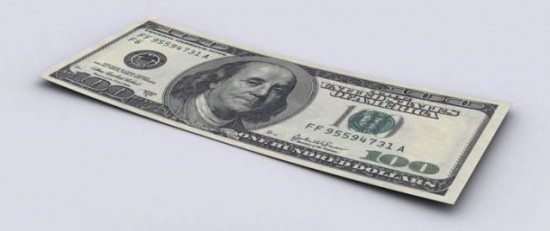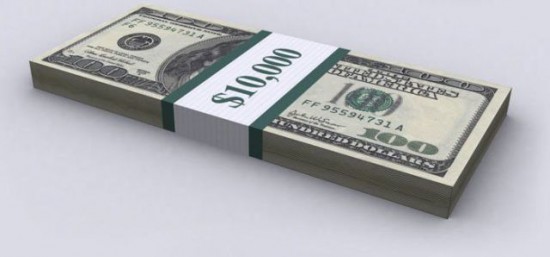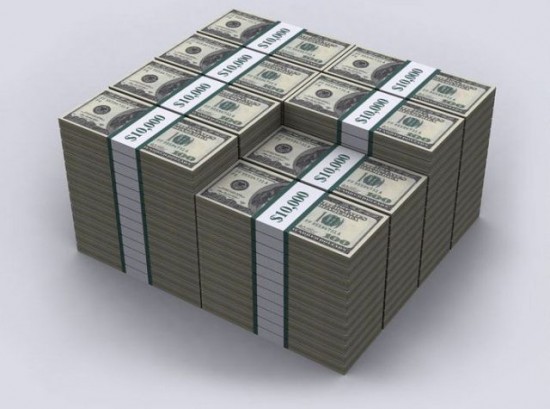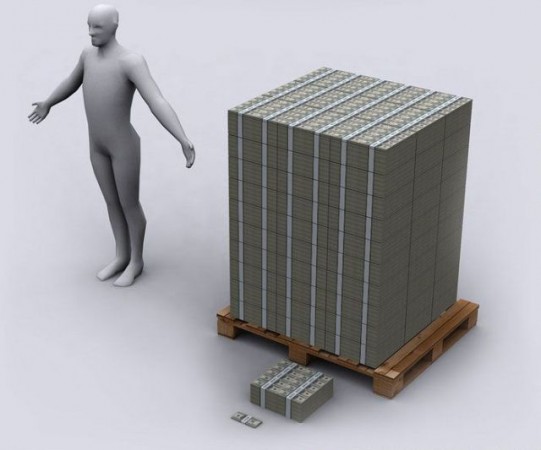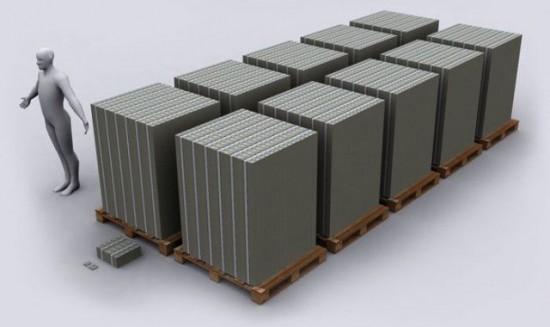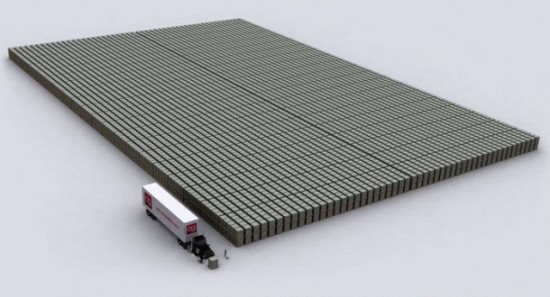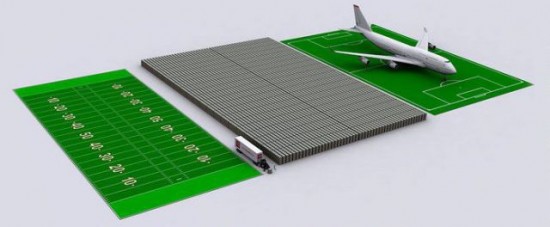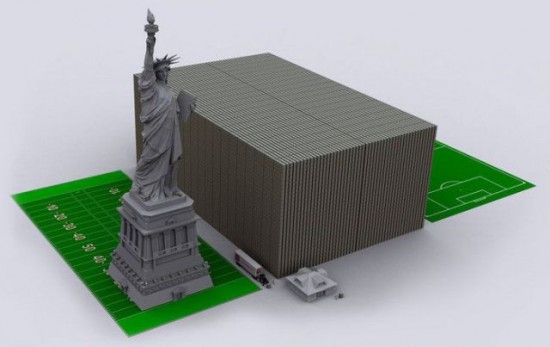I received an email update today from my Congressman, Trent Franks. It is pretty interesting, so I’m sharing it here.
$15 Trillion — Our National Debt, In Pictures
Yesterday, the national debt crossed the $15 trillion mark. Many in Washington, D.C. have gotten accustomed to throwing such large numbers around, sometimes seemingly forgetting that those nearly incomprehensible numbers represent real money. The below pictures put into perspective just how much money $15 trillion really is.
For some perspective, here is a single $100 bill:
This is what $10,000 in $100 bills looks like:
$1 Million:
$100 Million (with $1 Million and $10,000 next to it, for size comparison), which fits on a standard shipping pallet:
$1 Billion (You would have to stack the ten pallets pictured FOUR times to equal the amount the United States goes further into debt every single day — recall that these stacks are made up not of $1 bills, but of individual $100 bills):
This is what $1 Trillion looks like. Note that the pallets in the pictures are stacked two-deep. President Obama has added MORE than $1 trillion to the national debt EVERY year he has been in office. He has singlehandedly added about four times this amount to our debt. His failed, so-called “stimulus” bill cost nearly $1 trillion, by itself:
Another perspective on $1 trillion. To put this amount into perspective, if one were to spend $1 MILLION every day from the time Christ was born until today, he still would not have spent a full $1 trillion (nor would he have even spent enough to pay for the aforementioned failed stimulus bill):
Finally, this is $15 trillion — the amount the United States is in debt, as of today. The pallets are now stacked about thirty deep on an area the size of a regulation football field. The original pallet of $100 Million can be seen pictured in front of the semi-truck.
$114.5 Trillion – This picture represents the United States’ “unfunded liabilities.” This is the total amount of money the United States knows it owes, but cannot pay. Money owed to services like Medicare and Social Security that the government knows it does not have enough money to fully fund. Since this picture was made, our unfunded liabilities have actually increased by about $2 trillion:
Now, for some perspective, a little reminder of how we got here. House Democrats in 2010 stood and cheered as the debt ceiling was raised by nearly $2 trillion. In other words, we maxed out our credit cards and, instead of cutting spending, we just raised our credit limit to allow ourselves to spend even more.
Many of these same big spenders stand in strident opposition to the only solution that will control what is currently a looming financial disaster: cutting spending, capping future spending, and adding a balanced budget amendment to the U.S. Constitution.
The House will be voting tomorrow on a Balanced Budget Amendment and, as I always have, I will be voting in favor of it, and I encourage my colleagues to do the same.
Now, THAT is something to think about.

